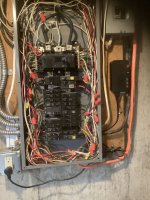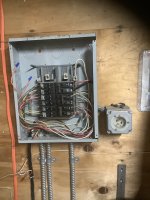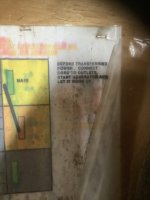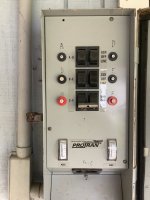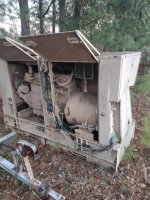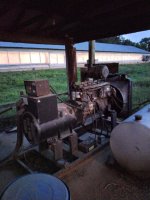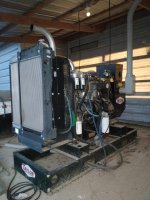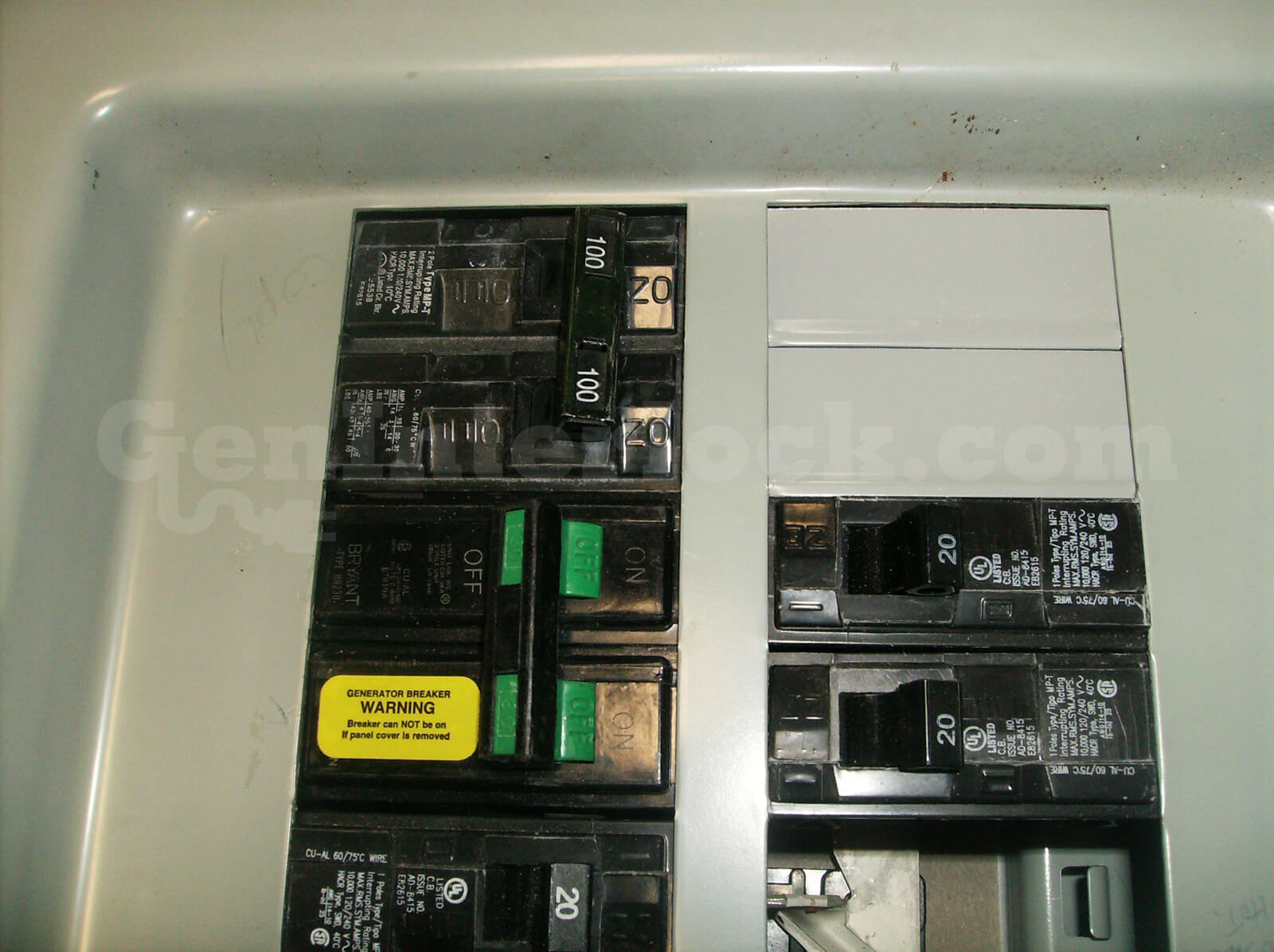tree grower
Silver Member
- Joined
- Dec 29, 2007
- Messages
- 210
- Location
- Cuttingsville, VT
- Tractor
- Ford 1210, Bobcat 742B, John Deere 1050
This is a little off topic, but I bet some of you know the answer. I just bought a house built in 1979. It has a generator hook-up, but the realtor said it has never been used--not part of the issue. It was installed and wired by a reputable local electrician. Attached to the generator cable connection box is a 12-circuit load panel with a double 60 being incoming power from the main load center and a double 20 being incoming from the generator connection. The remaining 12 breakers (some are tandems) are wired to individual circuits in the main panel.
What this amounts to is circuit A being a black and white wire leaving the main panel, (but still long enough to go around the perimeter of the panel as originally wired) , but powered by a yellow (or any other color) wire from a breaker in the gen panel to the black wire, and a white wire from the gen panel to the white wire in the circuit A. With 12 out-going breakers in the gen panel there are 24 additional wires entering the main panel and wire-nutted to the existing black and white out-going wires PLUS there are circuits in the main panel that are not connected to the gen panel. The congestion of wires in the main panel is beyond anything I have ever seen.
Despite having power outages a few times per year, I have never felt it necessary to buy a generator, and I have no experience with them. I would think that a generator would just push juice into the main panel replacing what normally comes from the grid. Clearly the gen won't put out the everyday amperage, so the homeowner needs to determine what he wants to run--the water pump, freezer, refrig and furnace , but not every light and appliance in the house.
I would love to disconnect (and ultimately remove) all connections to individual circuits from the gen panel to the main panel. I am not an electrician, but I feel perfectly comfortable inside a 30 circuit 150 amp panel. Is there some good reason why I must retain this multi-colored bowl of spaghetti in my load center?
What this amounts to is circuit A being a black and white wire leaving the main panel, (but still long enough to go around the perimeter of the panel as originally wired) , but powered by a yellow (or any other color) wire from a breaker in the gen panel to the black wire, and a white wire from the gen panel to the white wire in the circuit A. With 12 out-going breakers in the gen panel there are 24 additional wires entering the main panel and wire-nutted to the existing black and white out-going wires PLUS there are circuits in the main panel that are not connected to the gen panel. The congestion of wires in the main panel is beyond anything I have ever seen.
Despite having power outages a few times per year, I have never felt it necessary to buy a generator, and I have no experience with them. I would think that a generator would just push juice into the main panel replacing what normally comes from the grid. Clearly the gen won't put out the everyday amperage, so the homeowner needs to determine what he wants to run--the water pump, freezer, refrig and furnace , but not every light and appliance in the house.
I would love to disconnect (and ultimately remove) all connections to individual circuits from the gen panel to the main panel. I am not an electrician, but I feel perfectly comfortable inside a 30 circuit 150 amp panel. Is there some good reason why I must retain this multi-colored bowl of spaghetti in my load center?
